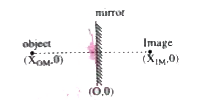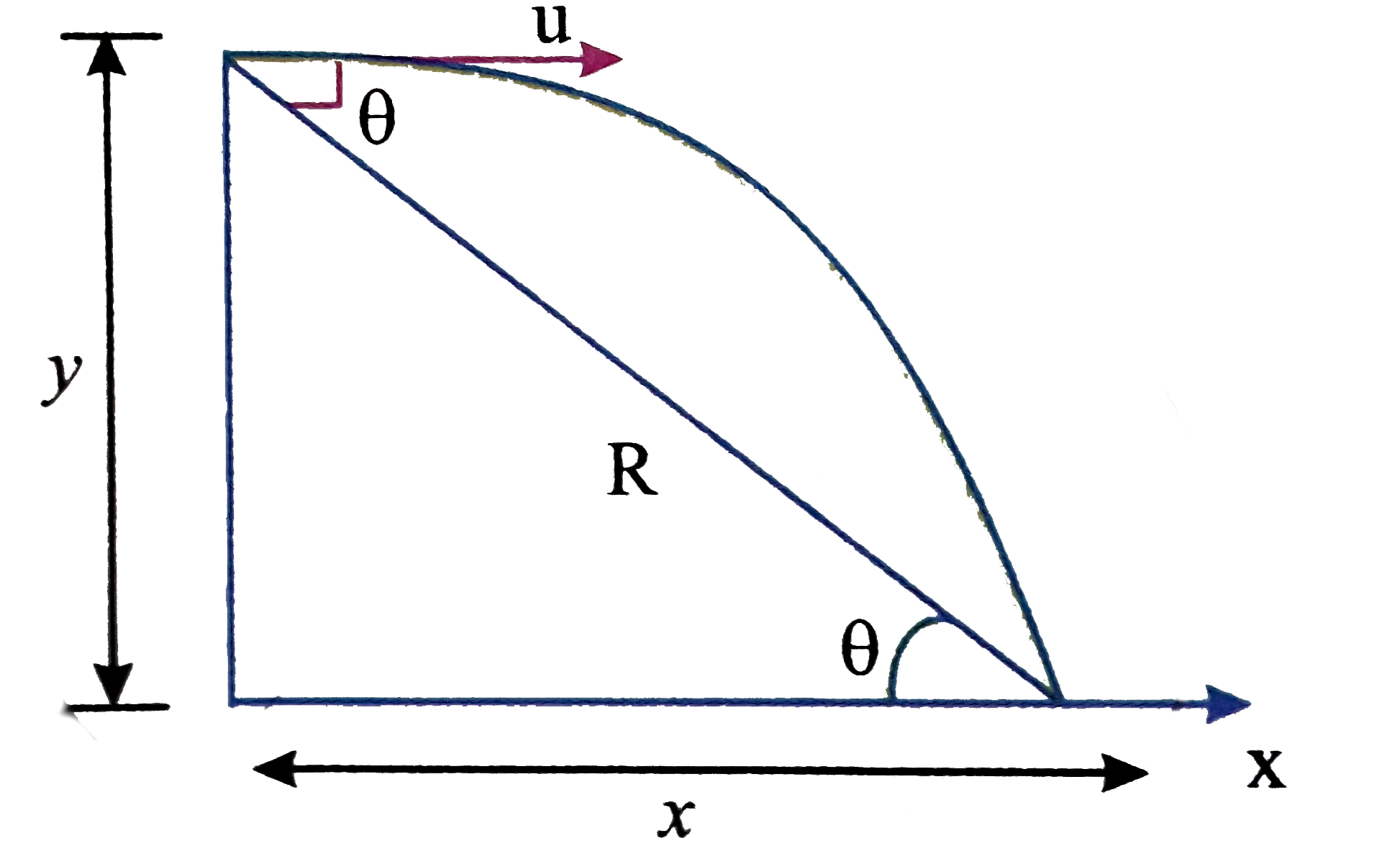The reflecting surface of a plane mirror is vertical. A particle is projected in a vertical plane which is also perpendicular to the mirror. The initial speed of the particle is 10m/s and the angle of projection is 60∘ from the normal of the mirror. The point of projection is at a distance 5m from the mirror. The particle moves towards the mirror. Just before the particle touches the mirror, the velocity of approach of the particle and the image is:
To solve the problem, we need to determine the velocity of approach of the particle and its image just before the particle touches the mirror.
1. Identify the Components of Velocity:
The initial velocity u of the particle is given as 10m/s and the angle of projection θ is 60∘ from the normal of the mirror. We can resolve this initial velocity into two components:
- Horizontal component (parallel to the mirror):
ux=ucos(60∘)=10cos(60∘)=10×12=5m/s
- Vertical component (perpendicular to the mirror):
uy=usin(60∘)=10sin(60∘)=10×√32=5√3m/s
2. Determine the Velocity of the Image:
The image of the particle in the mirror will have the same vertical component of velocity but in the opposite direction (since it is a reflection). Therefore, the vertical component of the image's velocity will be:
vy,image=−uy=−5√3m/s
The horizontal component of the image's velocity will be the same as the particle's:
vx,image=ux=5m/s
3. Calculate the Velocity of Approach:
The velocity of approach is defined as the rate at which the distance between the particle and its image decreases. Since both the particle and its image have the same horizontal component of velocity, we only need to consider the horizontal components for the approach:
- The particle approaches the mirror at 5m/s.
- The image approaches the mirror at 5m/s as well.
Therefore, the total velocity of approach is:
Vapproach=vx+vx,image=5+5=10m/s
Final Answer:
The velocity of approach of the particle and the image just before the particle touches the mirror is 10m/s.
The initial velocity u of the particle is given as 10m/s and the angle of projection θ is 60∘ from the normal of the mirror. We can resolve this initial velocity into two components:
- Horizontal component (parallel to the mirror):
ux=ucos(60∘)=10cos(60∘)=10×12=5m/s
- Vertical component (perpendicular to the mirror):
uy=usin(60∘)=10sin(60∘)=10×√32=5√3m/s
The image of the particle in the mirror will have the same vertical component of velocity but in the opposite direction (since it is a reflection). Therefore, the vertical component of the image's velocity will be:
vy,image=−uy=−5√3m/s
The horizontal component of the image's velocity will be the same as the particle's:
vx,image=ux=5m/s
The velocity of approach is defined as the rate at which the distance between the particle and its image decreases. Since both the particle and its image have the same horizontal component of velocity, we only need to consider the horizontal components for the approach:
- The particle approaches the mirror at 5m/s.
- The image approaches the mirror at 5m/s as well.
Vapproach=vx+vx,image=5+5=10m/s
The velocity of approach of the particle and the image just before the particle touches the mirror is 10m/s.
Similar Questions

The reflection surface of a plane mirror is vertical. A particle is projected in a vertical plane which is also perpendicular to the mirror. The initial velocity of the particle is 10 m/s and the angle of projection is 60∘. The point of projection is at a distance 5 m from the mirror. The particle moves towards the mirror. Just before the particle touches the mirror, the magnitude of relative velocity of approach of the particle and its image is
View SolutionA convex mirror forms an image one-fourth the size of the object. If object is at a distance of 0.5 m from the mirror the focal length of the mirror is
View Solution
Knowledge Check
The angle of incidence on a plane mirror is 30∘. The angle of reflection will be:
A30∘B60∘C15∘D0∘
A particle approaches from very large distance towards concave mirror along the principal axis. By the time the particle reaches the mirror the distance between the particle and its image will
View SolutionThe focal length of a convex mirror is 40 cm. A point source of light is kept at distance 40 cm from the mirror. Find the distance of image from the mirror.
View SolutionA plane mirror coincides with a plane having equation x = 3. A particle is moving along a line with direction rations 3,4,5. If speed of the particle is √2, the velocity of its image is
View SolutionA particle is projected with a velocity 10 m//s at an angle 37∘ to the horizontal. Find the location at which the particle is at a height 1 m from point of projection.
View SolutionYou are standing at a distance 2 metre from a plane mirror.
What is the distance of your image from the mirror ?
View Solution
If an object moves towards a plane mirror with a speed v at an angle θ to the perpendicular to the plane of the mirror, find the relative velocity between the object and the image.
View SolutionA particle is projected horizontally with a speed u from the top of plane inclined at an angle θ with the horizontal. How far from the point of projection will the particle strike the plane ?

View Solution
